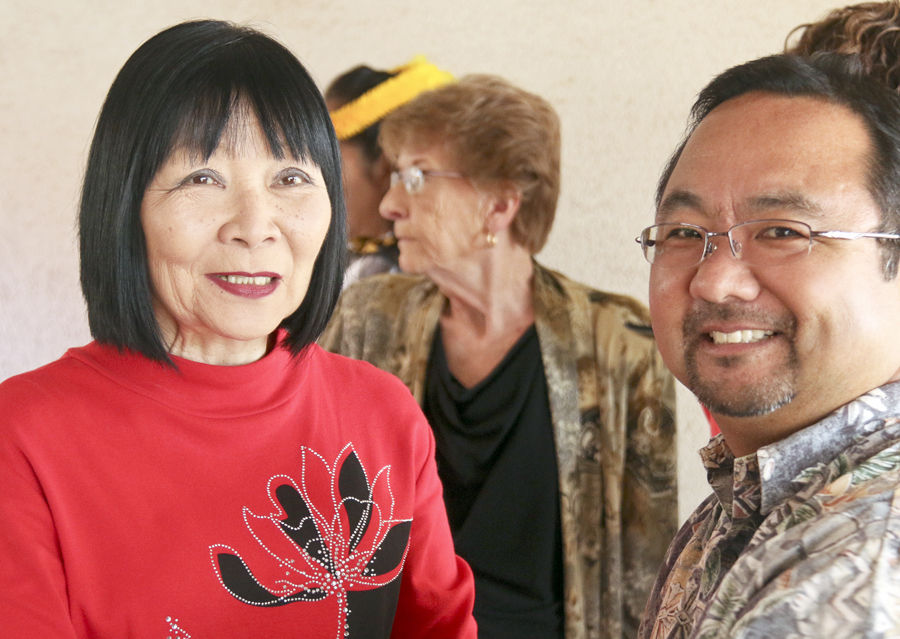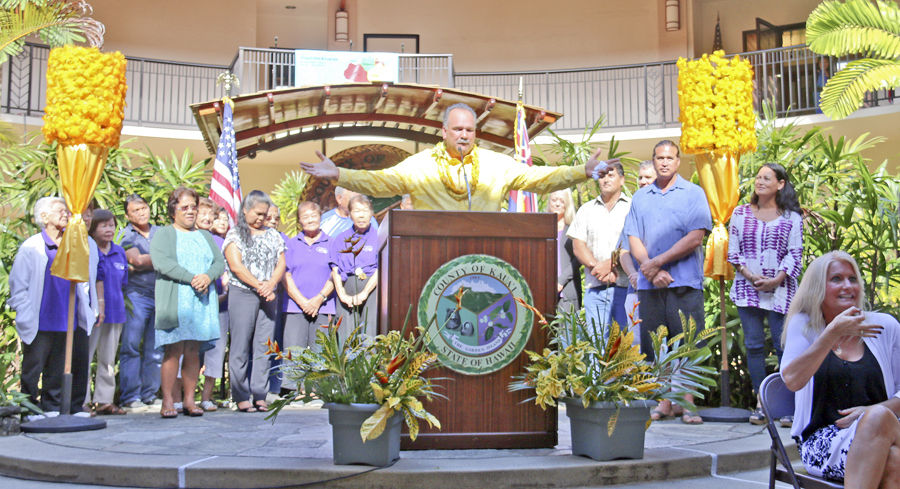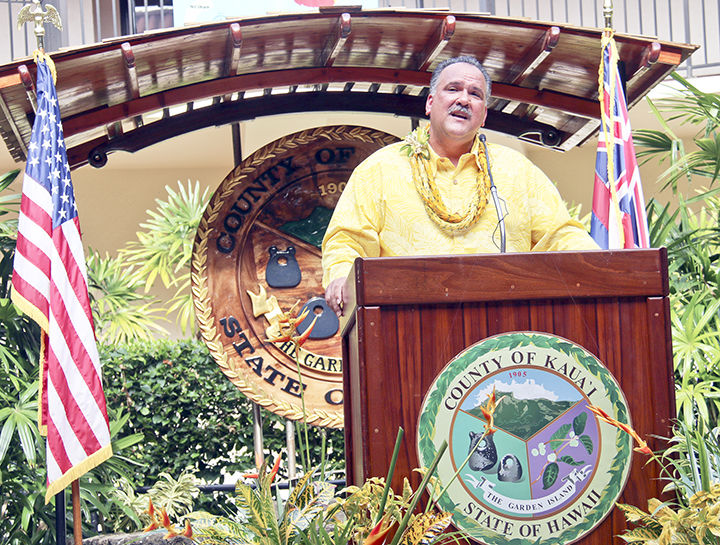LIHUE — Kauai Mayor Bernard Carvalho Jr. will admit that the County of Kauai was in a tough place last year. Reserve funds were low. The county’s share of the transient accommodations taxes was capped for the third consecutive year.
LIHUE — Kauai Mayor Bernard Carvalho Jr. will admit that the County of Kauai was in a tough place last year.
Reserve funds were low. The county’s share of the transient accommodations taxes was capped for the third consecutive year.
And then there were the first round of increases in collective bargaining costs to hit the budget that year.
“Last year, at this time, we talked about the critical need to bring our budget into true balance and where our expenditures don’t exceed our revenues and where we are making responsible decisions based on the fiscal realities of today, and what we know will be the fiscal realities tomorrow,” Carvalho said to the nearly 75 people who attended his annual State of the County address Monday at the Lihue Civic Center.
But the proposed $181.7 million budget for the 2015-2016 fiscal year before the Kauai County Council, he said, is a little different.
No new positions are recommended. County departments have identified and agreed to cut $3.1 million in operating expenses. And close to $1.9 million in savings were found by eliminating positions, shifting duties among existing employees, or reducing funds for 20 vacant positions.
“We are so much closer to a ‘sustainable budget’ than we were 12 months ago,” Carvalho continued. “This has been a team effort from the council, the administration and the public at large. I think you all deserve a round of applause.”
County budget officials in February estimated they would be facing about $8.2 million in new expenses mostly attributed to approved and pending collective bargaining increases. But about $5 million in personnel and operational savings, coupled with at least $2 million in increased real property tax revenues, helped to offset it.
“I think he touched on the points that were major concerns for the council,” County Council Chair Mel Rapozo said after the mayor’s address. “I think bringing the expenditures and revenues more in line is something that we’ve been seeking for a long time. I don’t know if we (the council) are going to propose more cuts — I can’t tell you that right now — but I like what I heard.”
Council Vice Chair Ross Kagawa noted that county officials didn’t dip into reserve funds for the first time in five years to balance the budget.
“I like hearing that we finally did some major cuts which were enough to make our expenses less than our revenues,” Kagawa said. “I think it’s the first time in five years that he (Carvalho) said they’ve done that. That’s what people in the public have been saying, ‘We have real property tax issues, so, county, you should spend less,’ so hopefully we’re headed in the right direction.”
Though there is only a $1 million difference between the proposed 2015-2016 budget and the $180.7 million budget for the current fiscal year, which ends on June 30, tough decisions had to be made along the way to achieve a balance, Councilwoman JoAnn Yukimura said.
One of them, she explained, was the County Council’s decision in 2014 to remove the permanent home use tax credit, which capped future real property tax increases on owner-occupied properties with proper exemptions at 2 percent, and “increase fees where we thought they were appropriate.”
“If we hadn’t done that, we’d be in very bad shape, but those of us who had the courage to do that got really criticized by the public,” Yukimura said. “It’s really important for the public to know that the reason why we’re moving back to a more balanced budget is because of these decisions we made in the last budget, and I don’t know if that was clear.”
Difficult decisions still lie ahead.
“I’m happy to see the tightening of the belt and the cuts, but it sounded like there may be an additional $5 million in taxes and I’m concerned about that,” Councilman Gary Hooser said about the county’s real property tax projections. “Even if there’s no rate increases, it’s still a tax increase because the values go up. I think we need to lower taxes, especially among homeowners who live in their houses, and that’s what I’m going to be focusing on.”
A tax increase specifically requested by Carvalho’s administration is a $0.005 per pound increase for passenger vehicles beginning on Jan. 1, 2016. An additional $0.005 per pound tax increase for passenger and freight vehicles is also proposed for the 2016-2017 fiscal year, beginning on Jan. 1, 2017.
These changes, county budget officials say, will provide more than $800,000 in additional revenues for road infrastructure repairs for the current fiscal year and $2.27 million for the following year.
Carvalho, for the second year in a row, said he is also asking the County Council to decrease the amount of all real property tax revenues earmarked for open space and public access projects from 1.5 to 0.5 percent. County budget officials estimate this would divert a little over $1 million to bolster the county’s reserve funds.
County Tax Manager Steve Hunt said the proposal is being floated again to help the county build up enough money to qualify for future bonds on key projects like the expansion of the Kekaha Landfill.




